Hungry Eyes. That was my youngest sister’s nickname growing up because she’d always order the biggest thing on the menu and then not be able to finish it.
Huuuuungry Eyes,
One look at you and I can’t disguise, I’ve got…
Huuuuungry eyyyyyes.
I feel the magic between you and I…
The song is stuck in your head now, isn’t it? You’re welcome. What? It was a good song and even better in the movie, amiright or amiright? #nobodyputsbabyinacorner
When I designed this workbench, I knew I wanted to be able to fit a full sheet of plywood on it, so I made it massive at 4 feet wide by 8 feet long. And now that it’s complete, I’m re-thinking my decision to make it so enormous. Now I need a bigger garage.
Just call me ‘Hungry Eyes.’
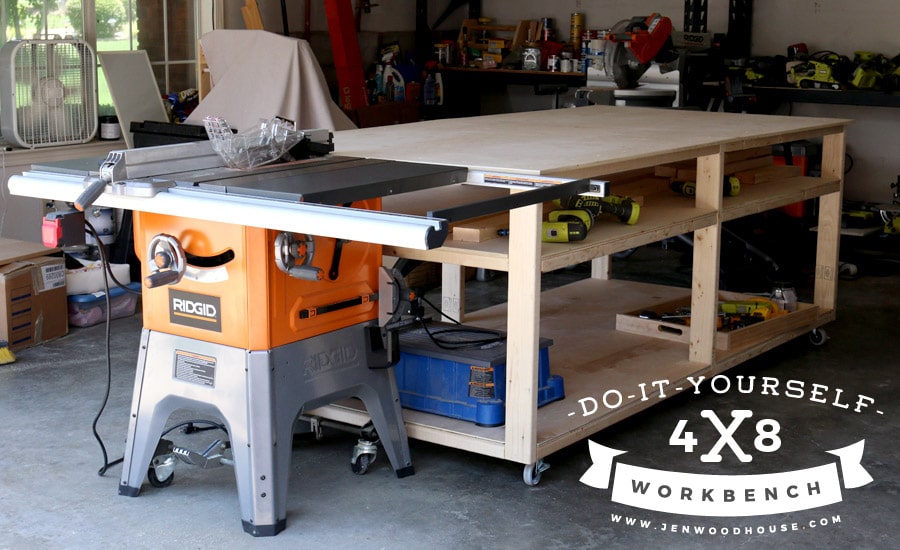
*This post contains affiliate links. To read my full disclosure policy, click here.
Whenever I’m building, my workspace gets so overcrowded with tools and materials that I no longer have space to work. I find myself wasting time clearing off the mess I made before I can continue working. Inspired by the ingenious Paulk workbench, I added this second shallow shelf so that my tools and things are still within arm’s reach, without cluttering up the top of my workspace. The bottom shelf can hold scrap lumber and other larger tools.
Another handy feature I added was a couple of these magnetic strips to hold screws, drill bits, tools, and other miscellaneous (magnetic) things.
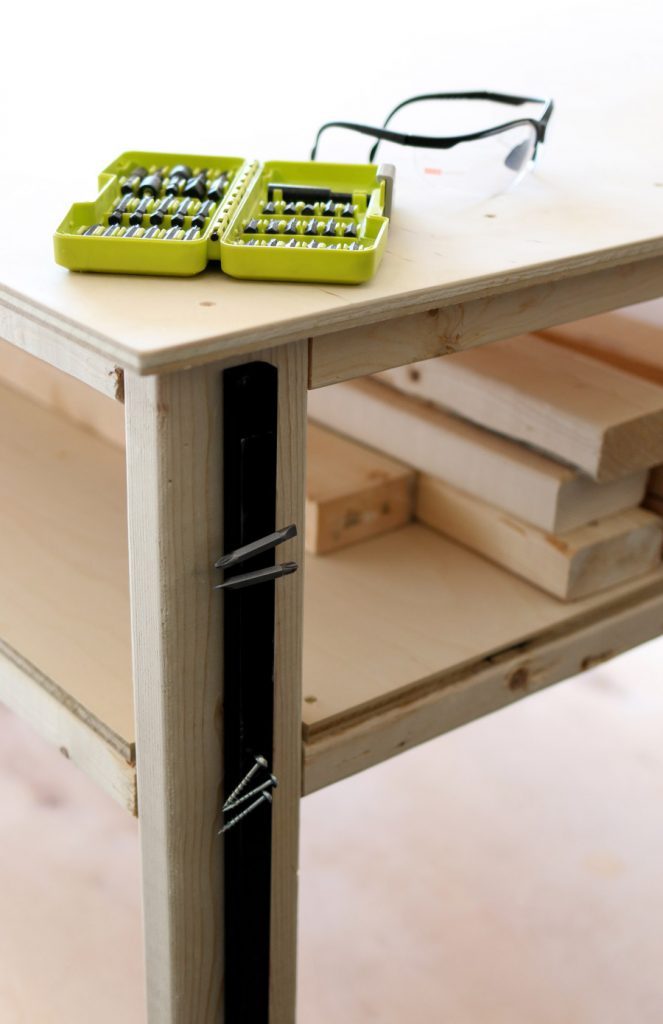
Pretty neat, right? Okay, so let’s get on with the tutorial!
First, I built a couple of gigantic letter E’s. I used pocket hole joinery for this. This is the Kreg Jig I use and love.
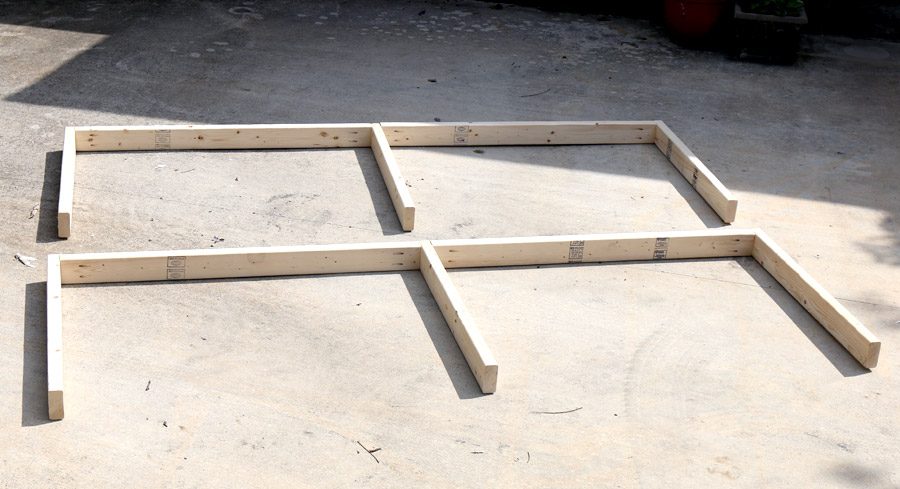
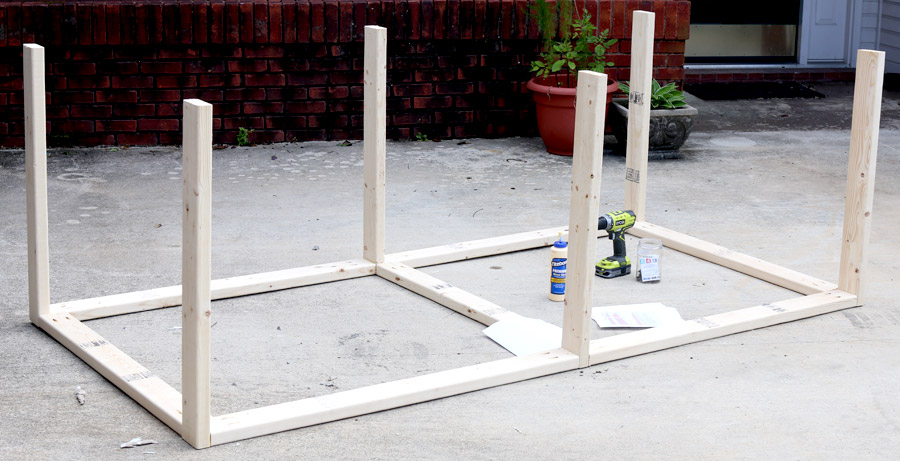
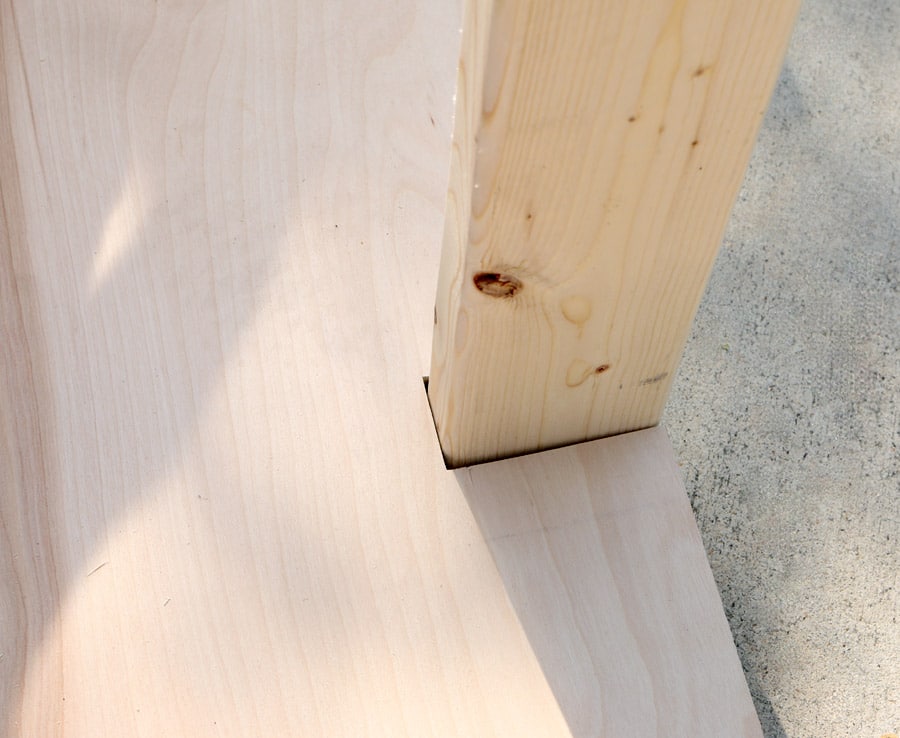
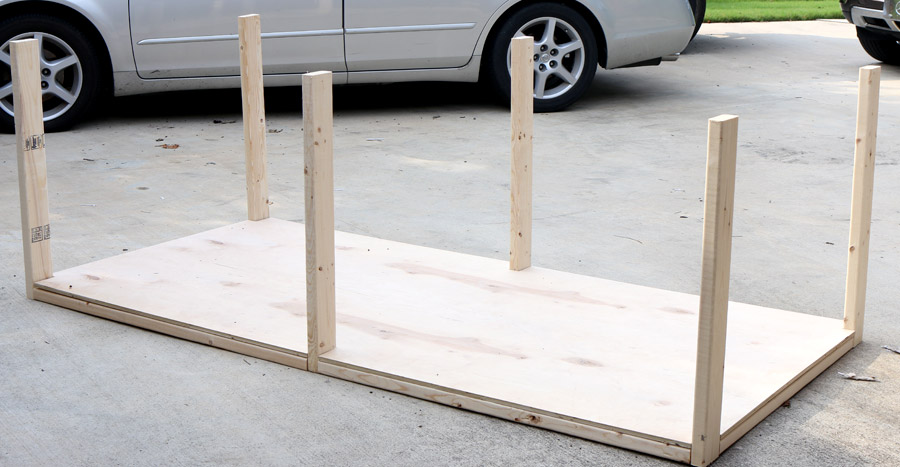
It’s a good thing they’re cute.
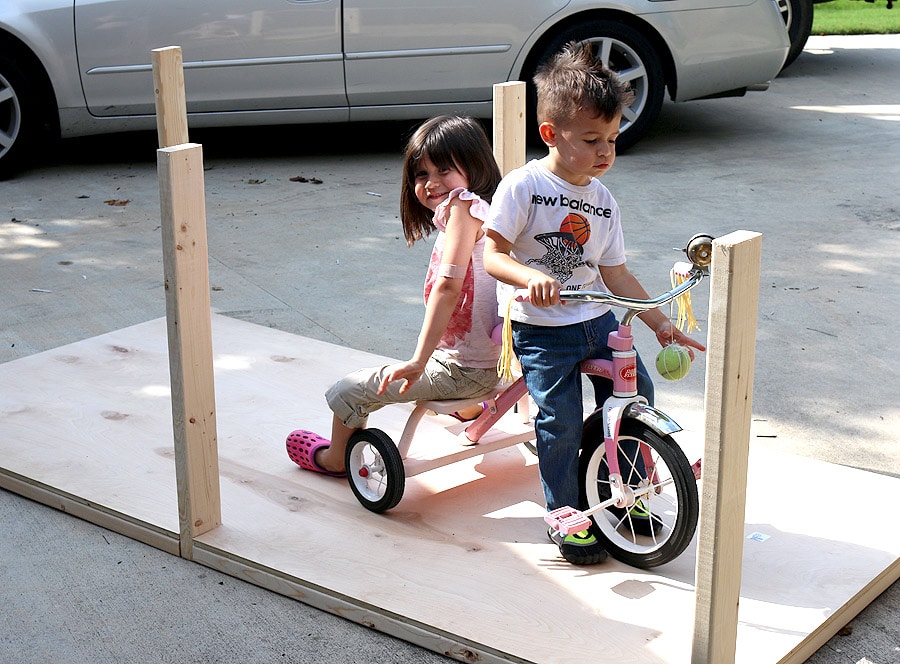

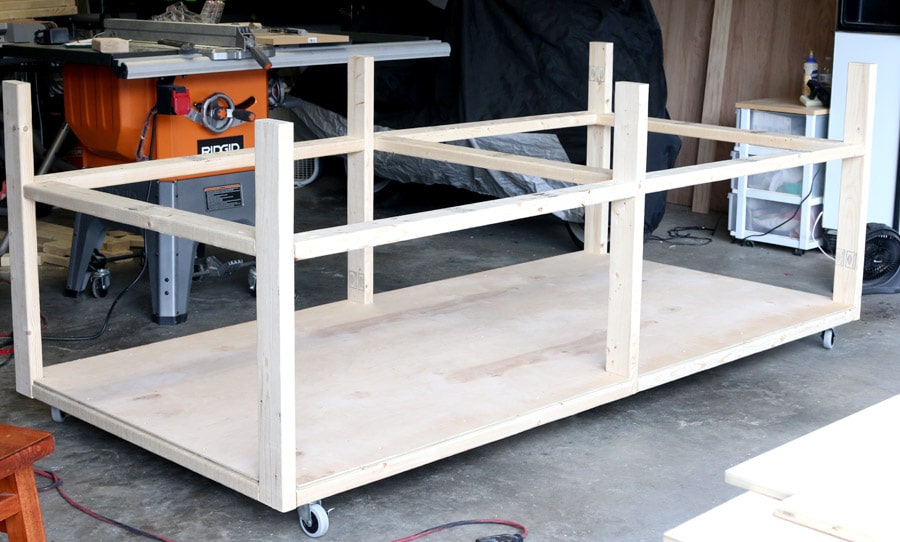
For the two bottom shelves, I cut the plywood down a couple inches on two sides because I wanted it to sit flush to the frame, with no overhang. I did this with my table saw, but you could easily use a circular saw with a Kreg Rip-Cut. If you use a circular saw, I’d recommend switching out the blade to a plywood/OSB blade to minimize tear-out in your plywood.
It was quite a challenge to rip and cut a full sheet of plywood without an out-feed table, so I know this workbench will be very useful after it’s built.
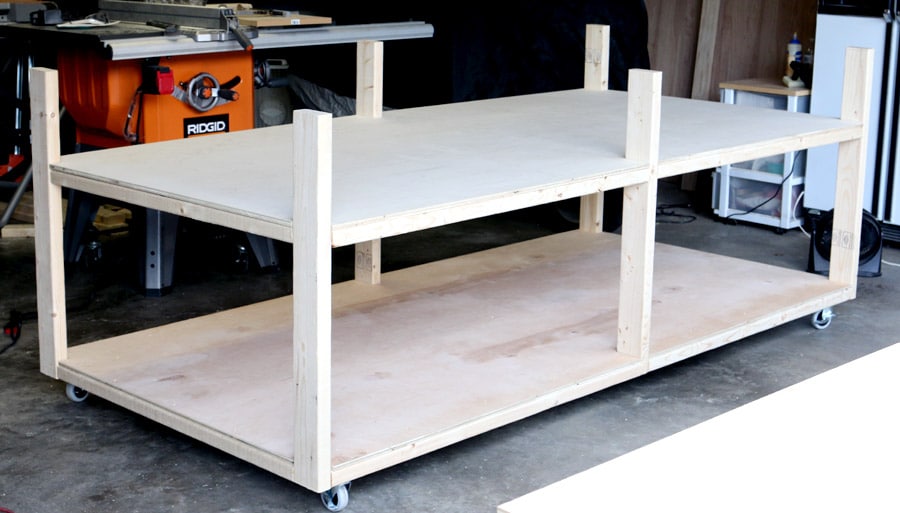
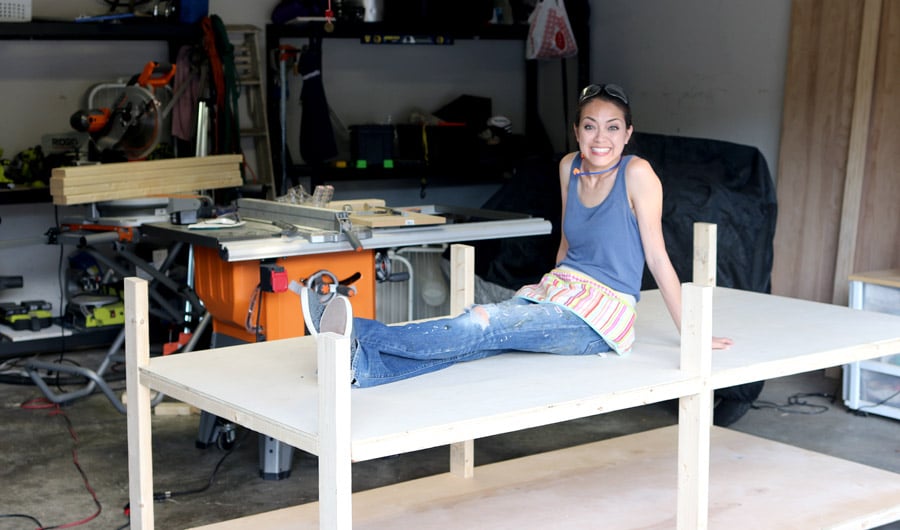
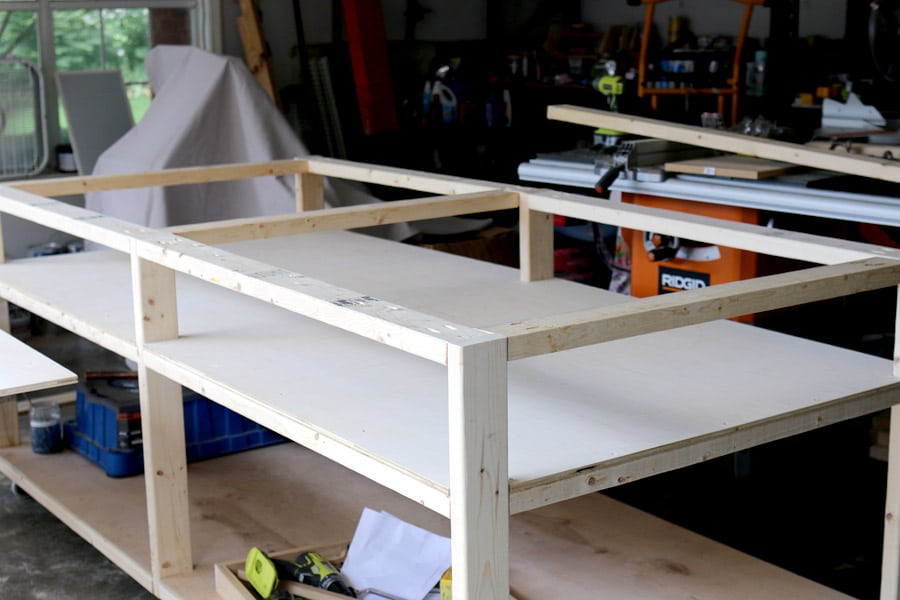
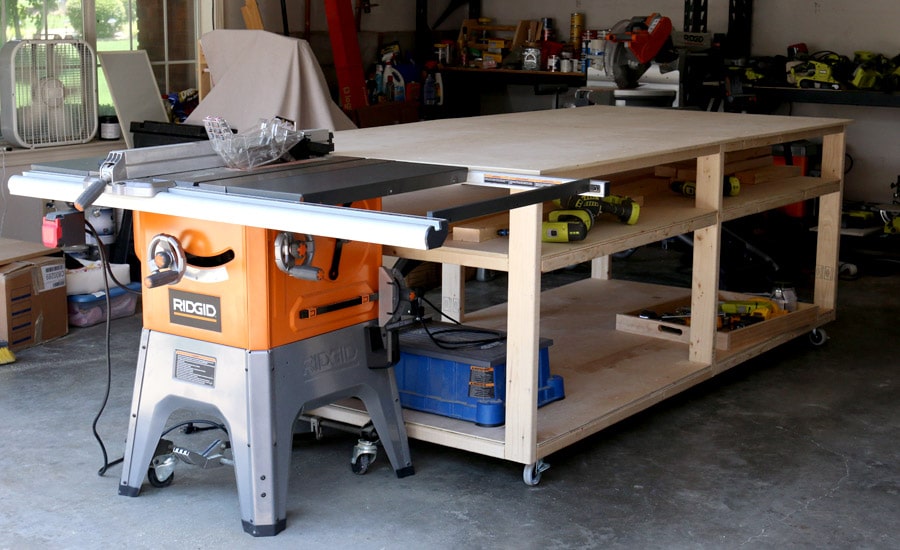
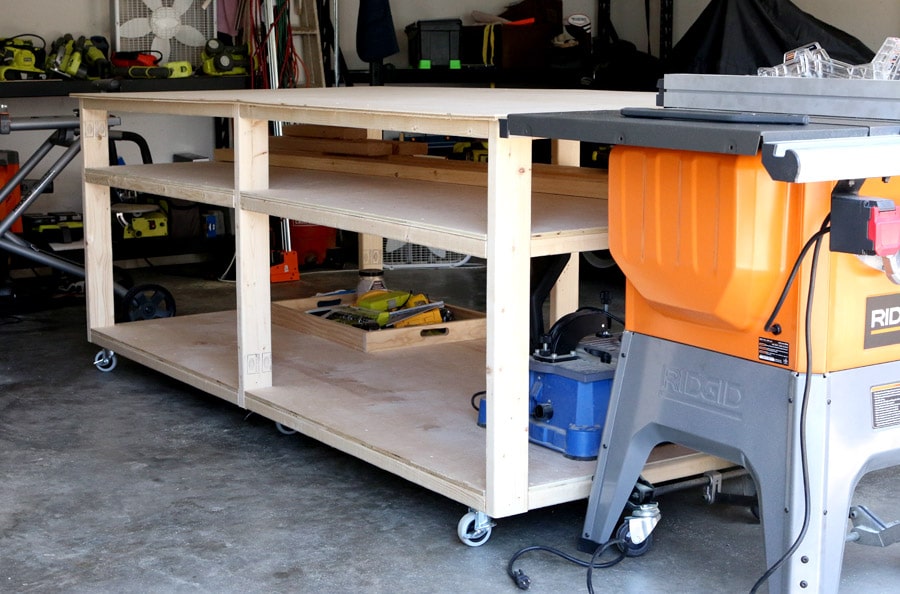
One look at you and I can’t disguise, I’ve got…
Huuuuungry Eyes…
I feel the magic between you and I.
I’ve got hungry eyes for all the projects just waiting to be tackled. I. Am. So. Excited.
If you’d like to build this for your own workshop, I’ve drawn up the step-by-step plans for you!
I would love for you to pin and share this DIY workbench using the image below! Thank you and happy building!
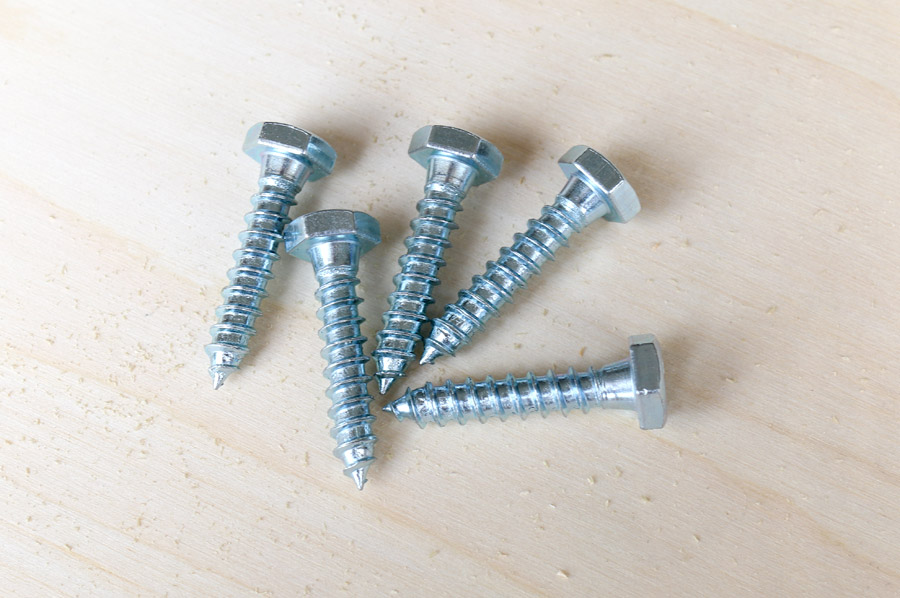
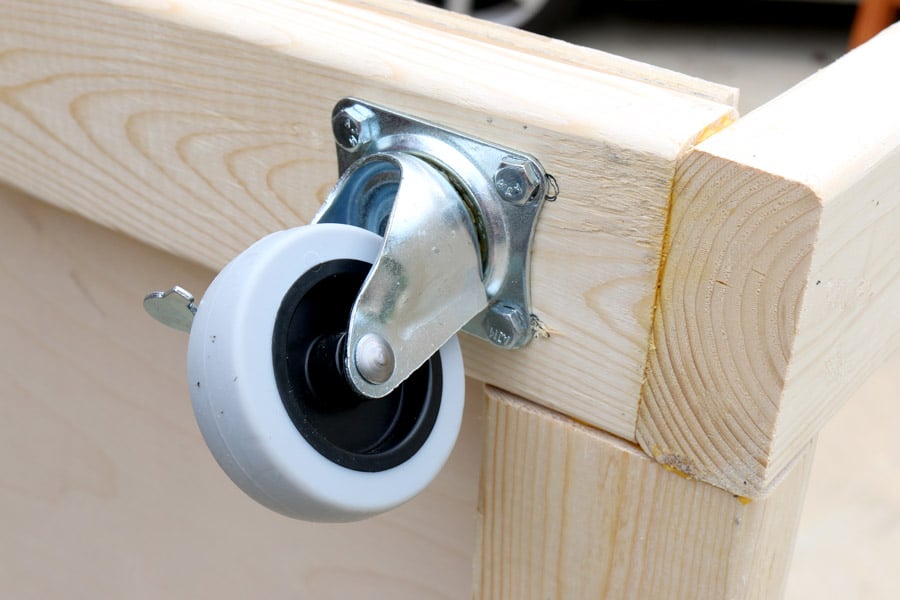
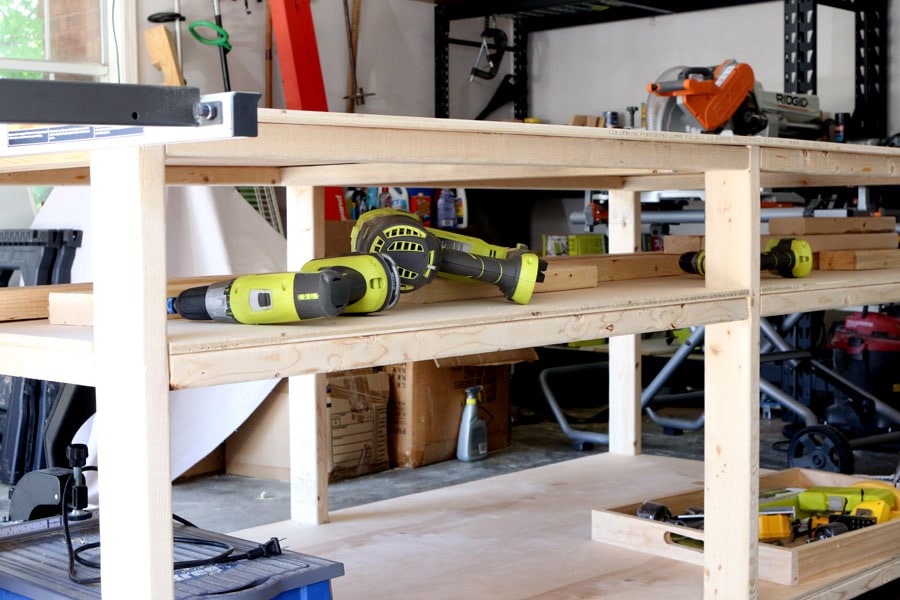
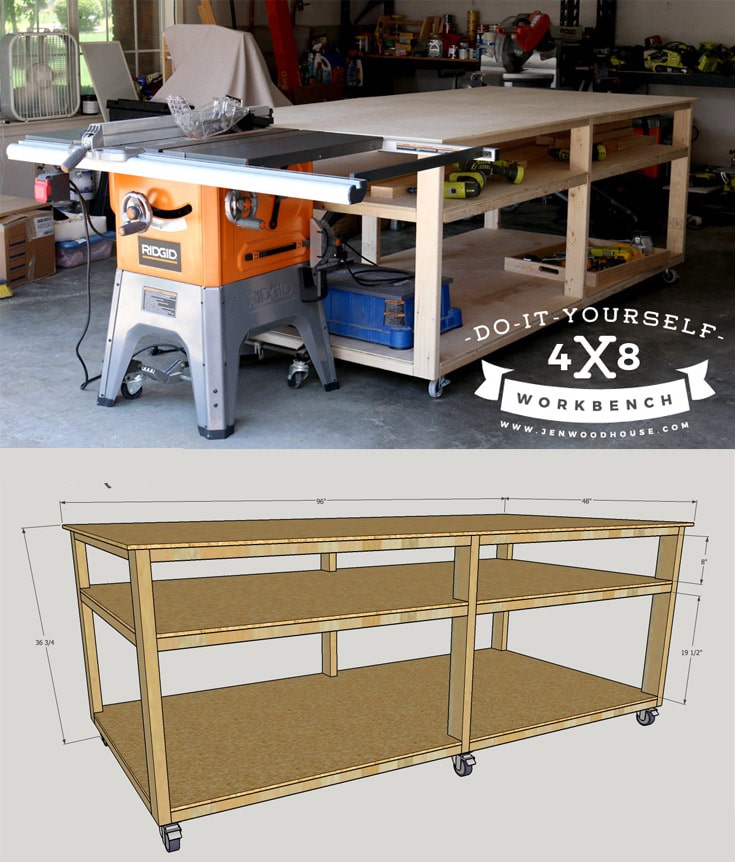
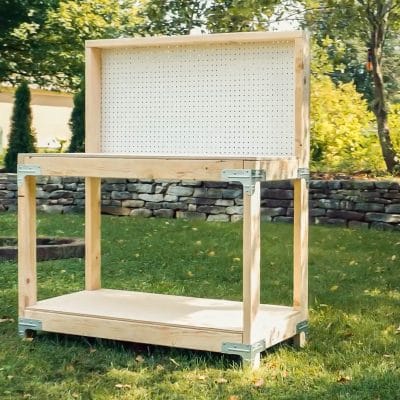

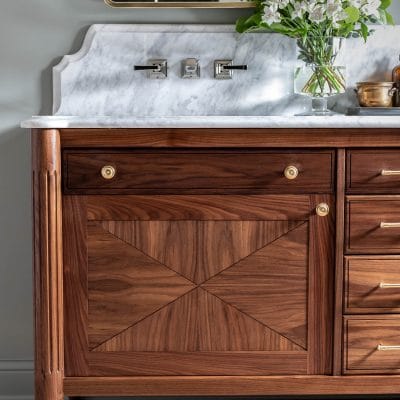


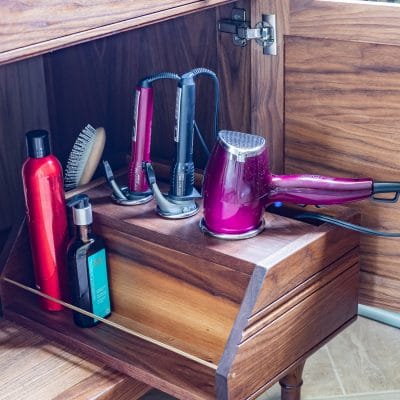
Hey;
I know this is a little late in this post and I’m sure you’ve been using the heck out of this bench already but I’d thought I’d give you some input when you go to change out your top.
MDF or they now have HDF.
If your not sure it stands for Medium Density Fiber and High Density Fiber.
This stuff is very heavy duty especially the newer HDF. The best part about using it for workbench tops that doubles as an out feed table is that the material is so smooth you’d be amazed at how easily it is to feed your larger pieces thru the table saw. Once you get the new piece on go over it with “Bullseye” shellac from Home Depot or Lowes.
This helps to seal it from any water damage and increases how smooth the top is.
There’s plenty of times I’m working on a large cabinet and you need to be able to move it around to work on it.
Anyway just looking thru some rolling workbench images and saw yours and thought I’d give you that little bit of my experience.
Thanks so much for the tips, Mark!
This is a great design. I am usin it to build a 30” wide x 8’ work bench. One thing I did to enhance it was to make about 28” on one end height adjustable. Now I can put my compound miter saw, router table or planer at that end at tabletop height. Love the table saw option at the other end. Great job and great basic design.
Great design that I purchased from you. It gave me the basis of what I was looking for. I’m tall so I modified the legs to be longer, as in chest height. I also did my version in the 6ft length. I saw your design online at 1:30PM, went to HomeDepot for supplies, and completed it by 9:05PM, then went out to Karaoke with my wife. My cost was a little over $200, but I bought some big casters at over $60 with breaks on them. This design has freed up a lot of shelf space in my garage, which is a huge plus for me.
I was looking at photo after photo online and yours was the design that a guy like me needs for his shop. It’s the essence of practical. Well done.
Hi Jen,
I want to buy the plans for the 4 x 8 workbench. However, i want to find out if i can put couple of power sockets at the ends to use for Sautering ? if yes, how would you recommend that ?
Thanks
Naveen
Hi Naveen,
I can’t speak to how the power outlets would be installed, but the easier alternative would be to simply screw a power strip to the workbench. Hope that helps.
Jen, do you think this could be done with a Simpson Strong Tie WBSK kit (with a few extra brackets for the third row)? I think it would need to incorporate some RTF2Z brackets as well. Using the brackets will add to the overall strength of the table rather than using pocket screws. Any thoughts?
I love the table and think this would be a great addition to my new workshop. where can I find the actual plans and cut list? Thank you
Hi Craig!
You can find the plans here: https://gum.co/xxrZh
Also, if you’re interested, I redesigned this workbench and have plans for the new one here:
https://www.sprucdmarket.com/plans/workbench-with-storage-shelves/
Hope that helps!
Hi Jen.
I’ve needed a decent outfeed table for the table saw for years. Saw a photo of something similar to yours recently and just built myself a second bench, this time a HUGE one, at 48″W x 96″ L x 38″ H. I designed the height at 38″ to match my table saw (a Bosch 4000 on a portable base).
The concept from which I was working has the table saw “built into” one end of the workbench; however mine will need a wider rip fence system. Presently, the fence on this saw can only rip up to 24″ or 26″ wide. I designed the workbench REALLY wide for the occasional wide ripping job, so here we are in limbo.
SO: Did you upgrade your rip fence system on your Ridgid table saw? That would be very interesting to me. Thanks from Greg in California.
Hi Greg,
Thanks for your note! No, I didn’t upgrade the Ridgid fence. This is the fence that came with the saw.
I liked the concept, and since I have just acquired an older Beaver saw witha 6.5 foot tqble, it was obvious that I would need a run-off table to suit. Several details would need to be changed. The posts will be doubled 2 X 4 that can be tcut to accept the horizxontal pieces to reinforce the jointery. Pocket screws are nice but not functional beyond cabinetry. Not robust for heavy weights. The other detail is the lack of a center devider so as you push stuff onto the shelf, it does not get pushed out the other side. And yes, power bars on three sides is a must